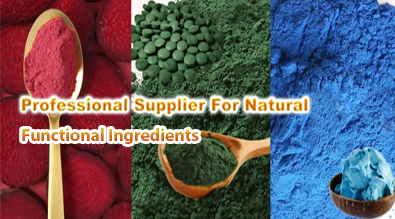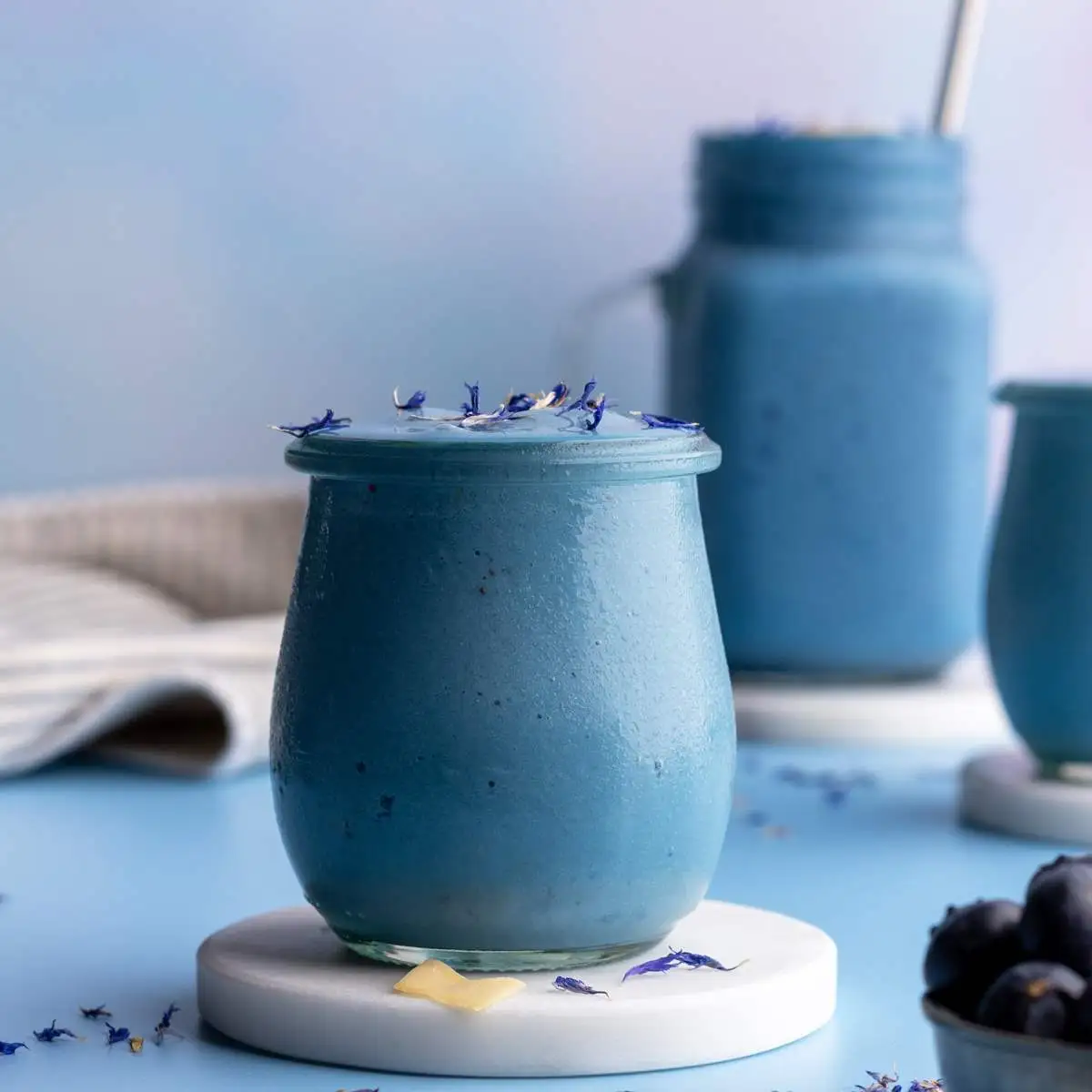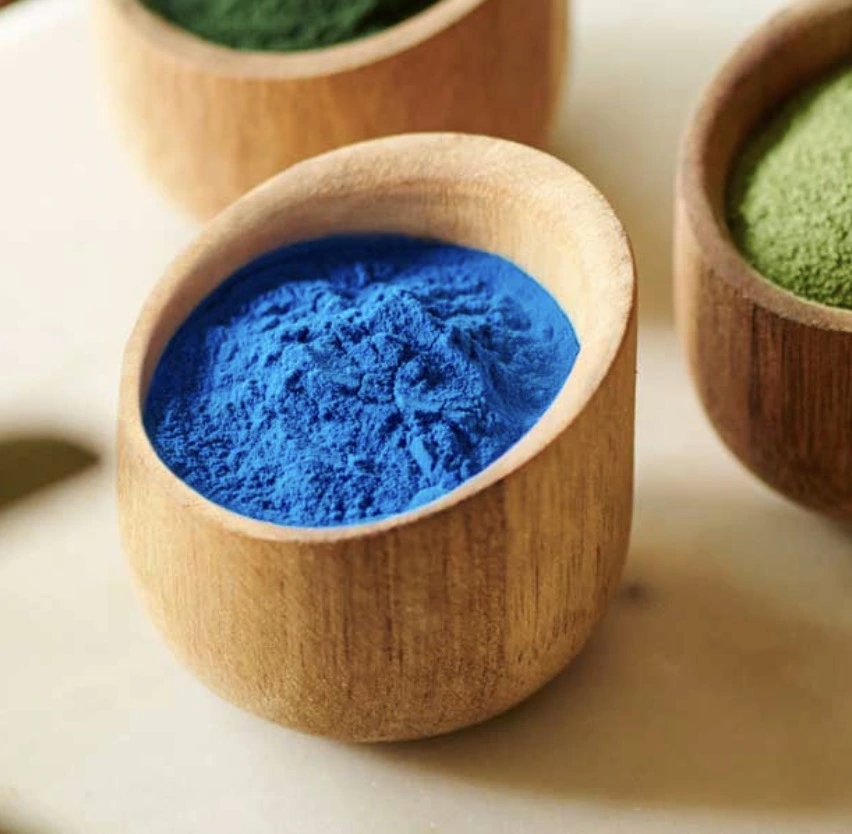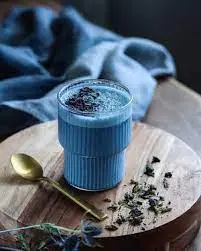Gardenia Blue Powder: Nature’s Brightest Blue Pigment
In the world of natural food coloring, Gardenia Blue Powder stands out as a vibrant and versatile option. This article delves into the fascinating world of this natural blue pigment, exploring its production, applications, and advantages over synthetic alternatives.

How Gardenia Blue Powder Is Made Naturally?
Gardenia Blue Powder is a testament to the power of nature and modern bioengineering. Let's explore the intricate process behind its creation and the key components that make it so unique.
The Source: Gardenia Jasminoides
At the heart of Gardenia Blue Powder lies the Gardenia jasminoides plant, a species known for its fragrant white flowers. However, it's not the flowers but the fruit that plays a crucial role in producing this vivid blue pigment. The seeds of the Gardenia fruit contain compounds that, when processed correctly, yield the stunning blue color we associate with this natural food dye.
Bioengineering Magic: The Transformation Process
The journey from Gardenia fruit to blue powder involves a sophisticated bioengineering process. This method harnesses the power of enzymes to unlock the color potential hidden within the plant material. Specifically, the process relies on the action of β-glucosidase, an enzyme that catalyzes a key reaction in the color formation.
During this process, a molecule of astragaloside (a compound found in the Gardenia seeds) undergoes hydrolysis. This reaction breaks down the astragaloside into two components: a molecule of glucose and a molecule of aglycone. It's the aglycone that then reacts with amino acids to generate the vivid blue pigment we know as Gardenia Blue.
The Role of Extraction and Purification
Once the blue pigment is formed, it undergoes a series of extraction and purification steps. These processes ensure that the final product is a concentrated, high-quality powder that meets food-grade standards. The extraction method typically employed is High-Performance Liquid Chromatography (HPLC), which allows for precise separation and isolation of the desired compounds.
The result of this meticulous process is a dark blue powder that's water-soluble and incredibly versatile in its applications. Its natural origin and careful processing make it a safe, non-toxic alternative to synthetic blue food dyes.

Top Uses for Gardenia Blue in Food and Cosmetics
Gardenia Blue Powder has found its way into a wide array of applications, particularly in the food and cosmetic industries. Its versatility and vibrant color make it a favorite among manufacturers looking to create visually appealing products using natural ingredients.
Coloring Food Products
In the food industry, Gardenia Blue Powder serves as a natural alternative to synthetic blue dyes. Its applications span a wide range of food products, adding a pop of color to various items we consume daily. Some common uses include:
- Confectionery: Hard candies, gummies, and other sweets benefit from the vivid blue hue.
- Baked Goods: Cakes, cookies, and pastries can incorporate this natural blue for decorative purposes.
- Beverages: Fruit juices, sports drinks, and cocktails can achieve a striking blue color naturally.
- Dairy Products: Ice creams, yogurts, and other dairy items can be tinted blue without artificial additives.
- Processed Foods: Various packaged foods use Gardenia Blue to enhance visual appeal.
The amount of Gardenia Blue Powder used in food products typically ranges from 0.005% to 0.01%, making it a cost-effective coloring option.
Applications in Cosmetics
Beyond food, Gardenia Blue Powder has made significant inroads in the cosmetics industry. Its natural origin aligns well with the growing consumer demand for clean beauty products. Some cosmetic applications include:
- Eyeshadows and Eyeliners: Creating vibrant blue shades in eye makeup.
- Lip Products: Adding a cool blue tint to lipsticks and glosses.
- Nail Polish: Formulating unique blue shades for nail care products.
- Hair Dyes: Incorporating natural blue tones in temporary or semi-permanent hair colors.
- Skincare Products: Adding a natural tint to face masks, serums, or other topical products.
Innovative Uses in Other Industries
While food and cosmetics are the primary applications, Gardenia Blue Powder's potential extends to other industries as well. Some innovative uses include:
- Textile Dyeing: As a natural alternative for dyeing fabrics, especially in eco-friendly fashion.
- Art Supplies: Creating natural blue pigments for paints, inks, and other artistic media.
- Packaging: Developing eco-friendly blue inks and dyes for product packaging.
- Pet Products: Coloring pet foods and grooming products naturally.
- Pharmaceutical Coatings: Providing a natural blue color for pill coatings and capsules.

Benefits of Choosing Gardenia Blue Over Synthetics
As consumers become increasingly conscious of what goes into their food and personal care products, natural alternatives like Gardenia Blue Powder are gaining popularity. Let's explore the numerous benefits of choosing this natural pigment over synthetic blue dyes.
Safety and Health Considerations
One of the primary advantages of Gardenia Blue Powder is its safety profile. Unlike some synthetic blue dyes that have been associated with health concerns, Gardenia Blue is derived from natural sources and processed using bioengineering techniques that preserve its natural integrity. Key safety benefits include:
- Non-Toxic: Gardenia Blue is considered safe for consumption and topical application.
- Allergen-Free: It's less likely to cause allergic reactions compared to some synthetic dyes.
- No Known Side Effects: Regular use of products containing Gardenia Blue hasn't been linked to adverse health effects.
- Regulatory Approval: It's approved by food safety authorities in many countries, including FDA approval in the United States.
Environmental Impact
Choosing Gardenia Blue over synthetic alternatives can have positive implications for the environment. Here's how:
- Biodegradability: As a natural product, Gardenia Blue breaks down more easily in the environment.
- Reduced Chemical Waste: Its production process generates less chemical waste compared to synthetic dye manufacturing.
- Sustainable Sourcing: Gardenia plants can be cultivated sustainably, reducing the environmental impact of sourcing.
- Lower Carbon Footprint: Natural pigment production often requires less energy than synthetic dye manufacturing.
Consumer Appeal and Market Trends
In today's market, natural ingredients are increasingly sought after by consumers. Choosing Gardenia Blue can provide several market advantages:
- Clean Label Appeal: Products using Gardenia Blue can be marketed as containing natural ingredients.
- Meeting Consumer Demands: It aligns with the growing trend towards natural and organic products.
- Versatility in Application: Its wide range of uses makes it attractive to various industries.
- Unique Selling Point: The use of a natural blue pigment can differentiate products in a crowded market.

Conclusion
Gardenia Blue Powder represents a significant advancement in natural food coloring and cosmetic ingredients. Its vibrant hue, versatility, and natural origin make it an excellent choice for manufacturers looking to meet the growing demand for clean label products. As consumers continue to seek out natural alternatives, Gardenia Blue stands poised to play an increasingly important role in various industries.
For more information on Gardenia Blue Powder and other natural plant extracts, please contact us at info@yanggebiotech.com. Our team at Yangge Biotech Co., Ltd. is dedicated to providing innovative, high-quality raw material solutions to meet your specific needs.
FAQ
Q: Can we get some samples to test before purchasing?
A: Of course, we can provide free samples of 20 to 100 grams, but the shipping cost is at the customer's expense. The shipping cost can be deducted from the next order, or the samples can be sent through your courier account.
Q: Do your products have relevant certifications?
A: Yes, our products are certified for HALAL, ISO, HACCP, Kosher, and other certifications.
Q: What is the minimum order quantity (MOQ)?
A: Small batches of samples can be customized according to your requirements.
Q: Do you offer OEM and ODM services? Can the formula be customized based on our own?
A: Of course, we provide ODM and OEM services to many customers. Our product range includes softgels, capsules, tablets, sachets, granules, and private label services. Simply contact us and let us know your requirements. Our experienced R&D team can also develop new products with specific formulas.
Please contact us to design your own branded products.
Q: How do you handle quality complaints?
A: First, we have a comprehensive quality control SOP. We provide authoritative third-party inspection reports for almost all products before shipment to minimize the possibility of quality issues. Second, we have a comprehensive return and exchange procedure. If there is a genuine quality dispute, we will strictly follow the SOP.
Q: How do you ship? How long does delivery take?
A: For small orders, we typically use DHL, UPS, EMS, FedEx, or TNT. Delivery typically takes 3-7 days. We also offer air and sea freight services. We have a strong freight forwarding team and can provide you with a one-stop service, including DDP and DDU.
Q: What are your payment terms?
A: 100% prepayment, payable by T/T, Western Union, MoneyGram, or PayPal.
Q: What is the shelf life of your products?
A: 2 years with proper storage.
Q: Is the packaging environmentally friendly?
A: We attach great importance to environmental protection and are constantly improving our product packaging. Some products are packaged in recyclable paper. Packaging materials are carefully selected to ensure product safety during transportation and storage, and to minimize environmental impact. We are committed to achieving a balance between environmental friendliness and practicality in our product packaging, and to contributing to sustainable development.
1. Smith, J.A. (2022). Natural Food Colorants: Advances in Extraction and Application. Journal of Food Science and Technology, 59(4), 1205-1220.
2. Chen, L., & Wang, X. (2021). Gardenia Blue: A Comprehensive Review of Its Production, Properties, and Applications. Critical Reviews in Food Science and Nutrition, 61(15), 2567-2583.
3. Johnson, M.R. (2023). The Rise of Natural Pigments in the Cosmetic Industry. International Journal of Cosmetic Science, 45(2), 178-192.
4. Garcia-Lopez, A., et al. (2020). Comparative Study of Natural vs Synthetic Blue Food Colorants: Safety, Stability, and Consumer Perception. Food Additives & Contaminants: Part A, 37(8), 1302-1318.
5. Yamamoto, K., & Tanaka, T. (2022). Bioengineering Approaches in Natural Pigment Production: Focus on Gardenia-Derived Blues. Biotechnology Advances, 55, 107890.

Based on your location and order quantity, you will have the opportunity to receive a limited time free shipping promotion!

Who we are


